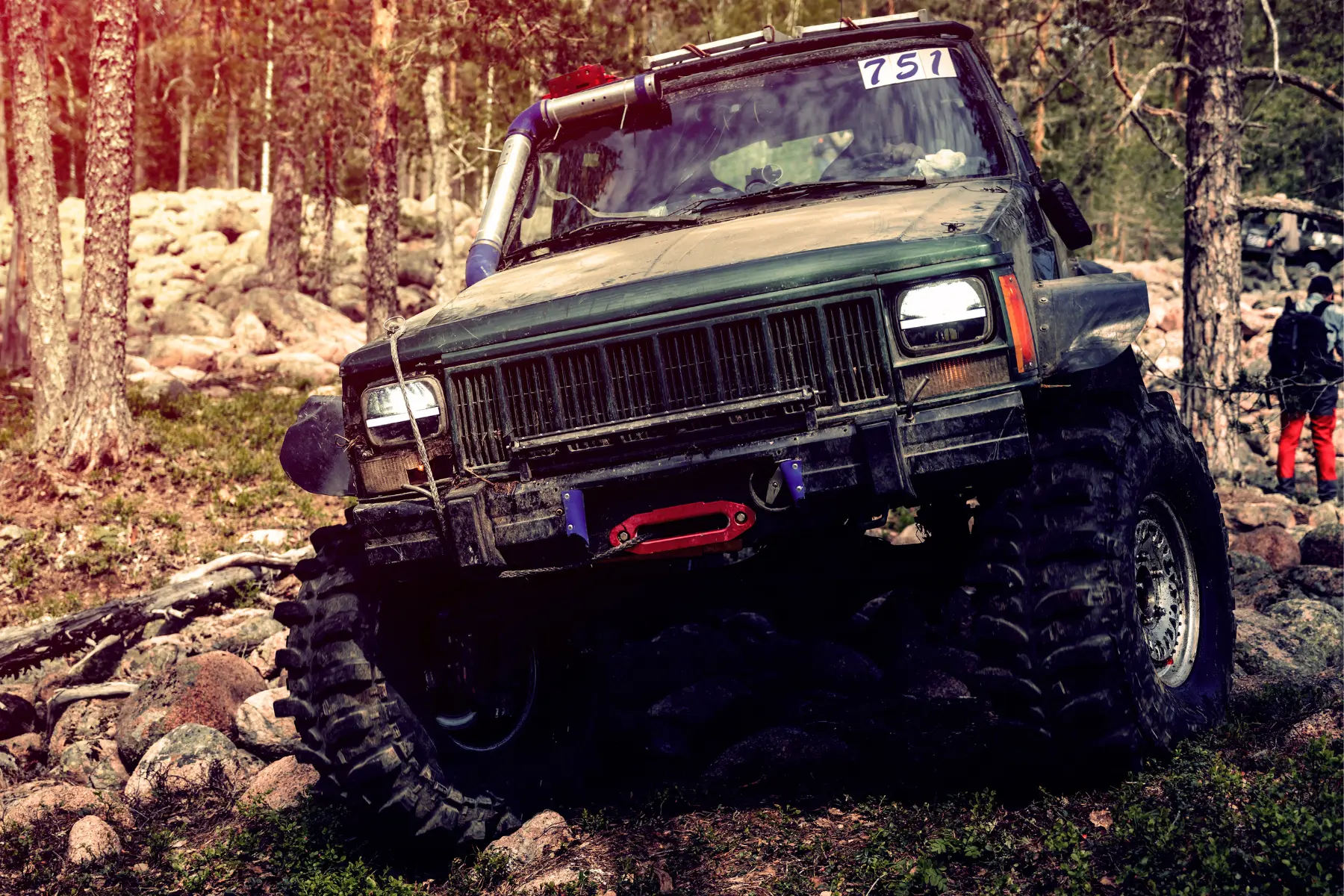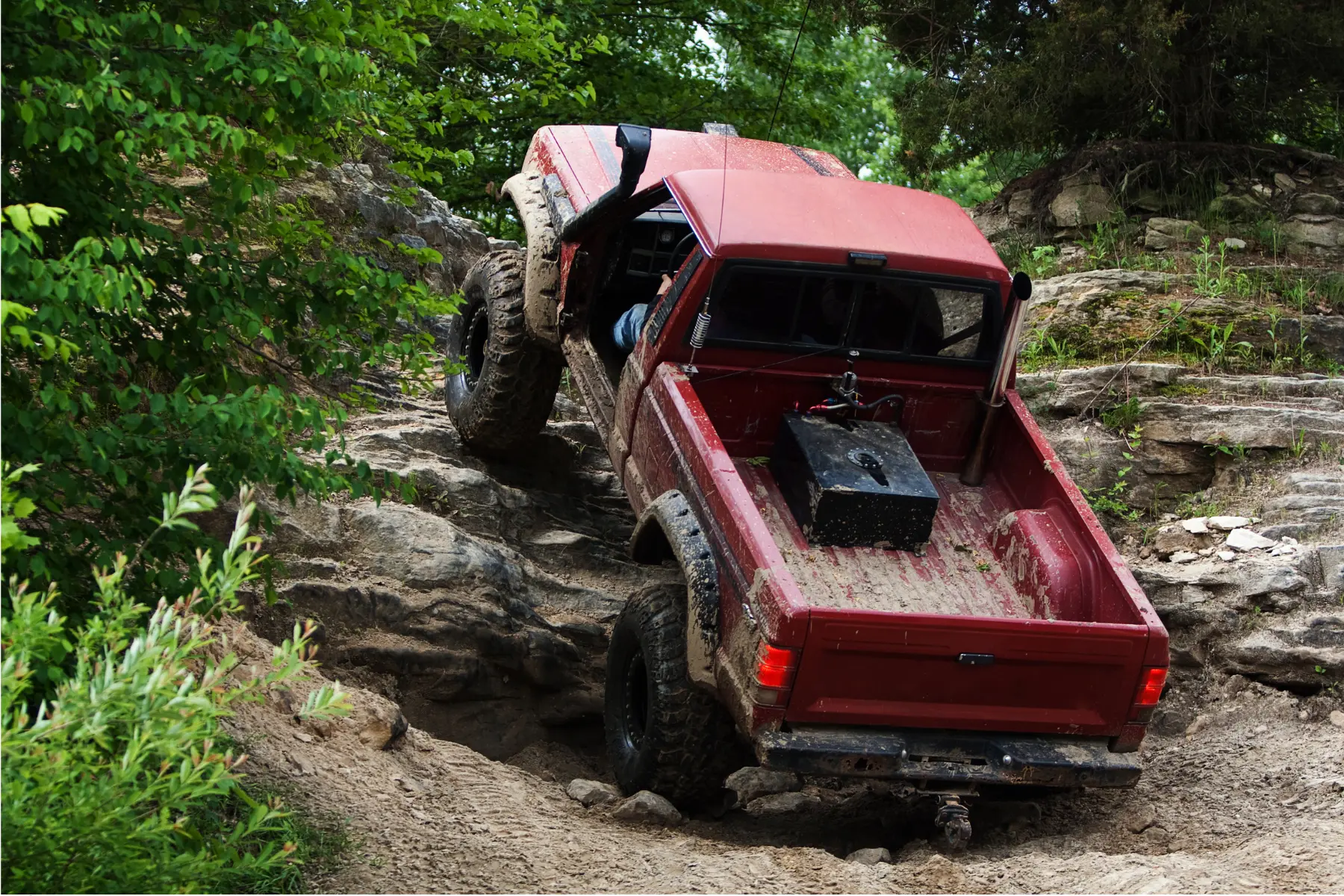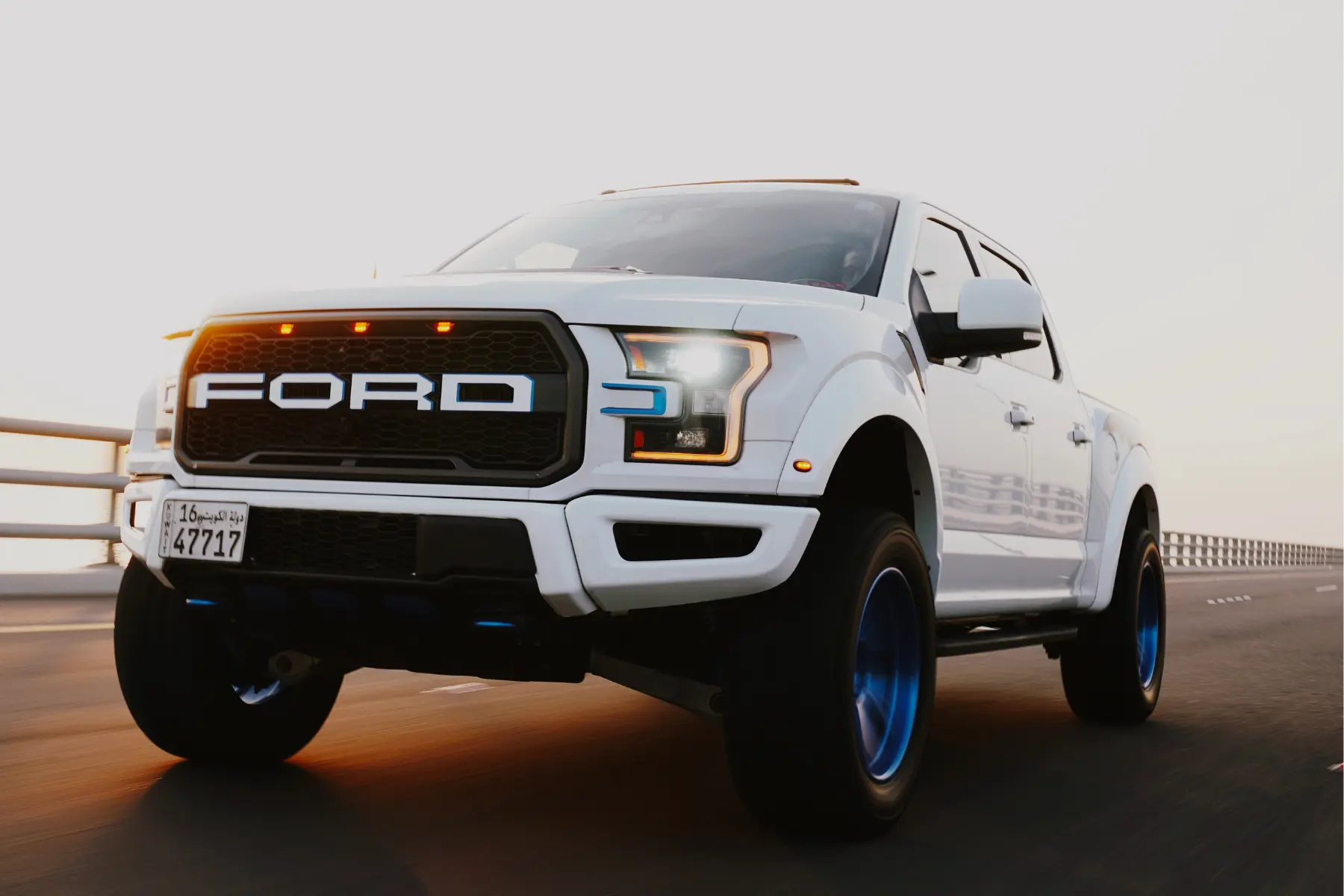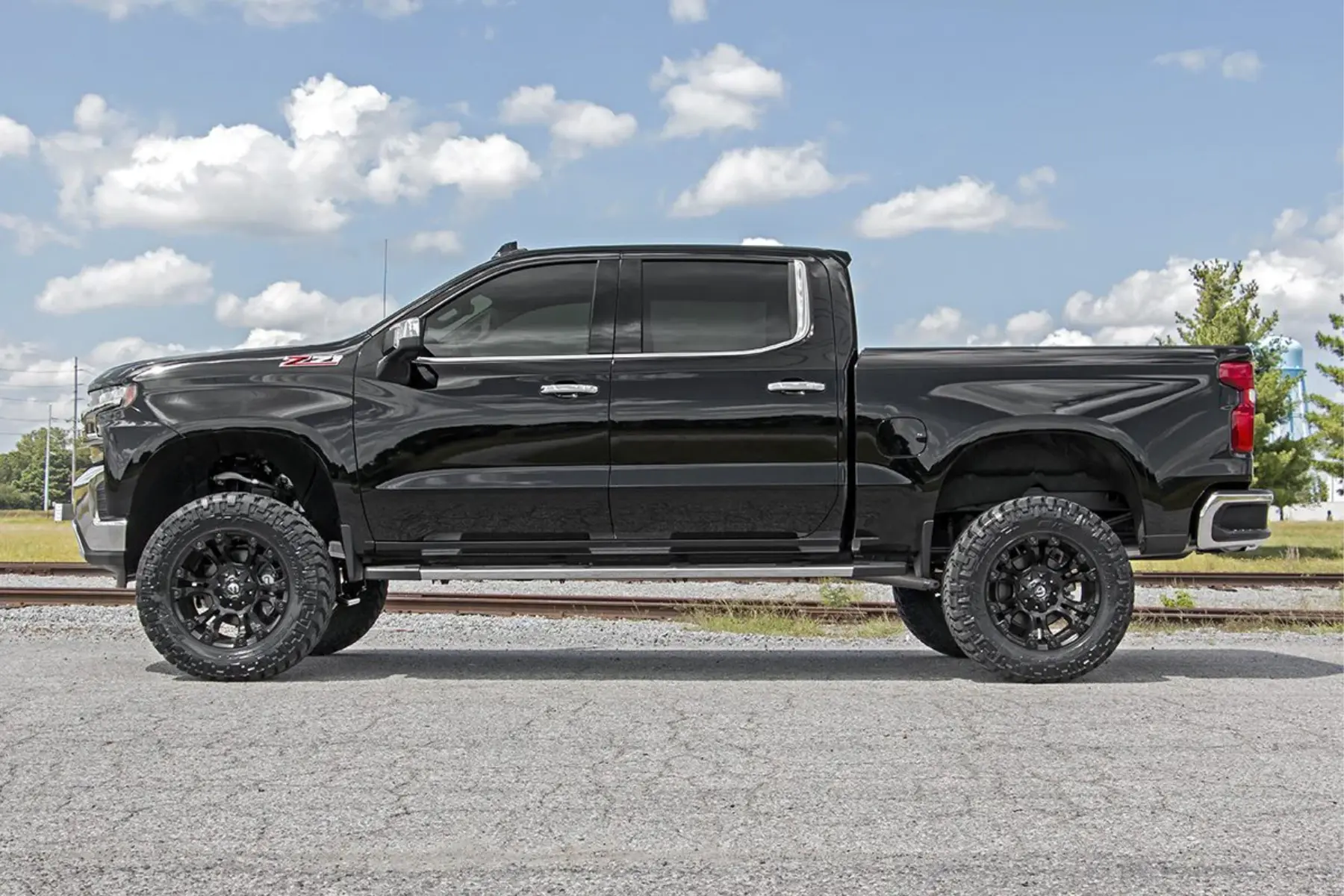The suspension system in a truck does more than just smooth out the ride—it directly influences handling, braking, load stability, and how well the vehicle responds to different road conditions. Without a well-functioning suspension, even a powerful engine or strong frame can’t deliver the control and reliability drivers expect. Whether you’re hauling heavy loads or driving over uneven ground, your suspension absorbs the stress and keeps the tires firmly on the road. Investing in a truck suspension upgrade allows drivers to tailor these functions to meet specific needs, whether for comfort, towing strength, or rugged terrain performance.
A good upgrade can transform the way your truck handles, improving safety, durability, and efficiency. With the right modifications, you’ll experience noticeable gains in control and responsiveness. Exploring the best truck suspension upgrades helps you choose enhancements that align with your driving habits and performance goals, making every mile more reliable and comfortable.
Types of Truck Suspension Upgrades
Heavy-Duty Truck Suspension Upgrades for Towing and Hauling
When trucks are used regularly for towing trailers or carrying heavy loads, the stock suspension often isn’t enough to provide the support and stability needed. Upgrading to a more robust system enhances both safety and performance under stress. Reinforced leaf springs, upgraded shocks, and stronger mounts help maintain level ride height even under significant weight. These improvements also reduce sway and sag, especially during braking or turns. For drivers who rely on their trucks for demanding work, choosing the right heavy-duty truck suspension upgrades can dramatically improve performance while extending the life of tires and drivetrain components. In addition, reinforced setups reduce bounce and bottoming out, making the ride feel more secure, especially on uneven surfaces or construction zones. Hauling heavy loads shouldn’t feel like a strain on your vehicle, and with the right upgrade, you’ll get better weight distribution, less wear on your suspension parts, and smoother overall handling when the truck is fully loaded.
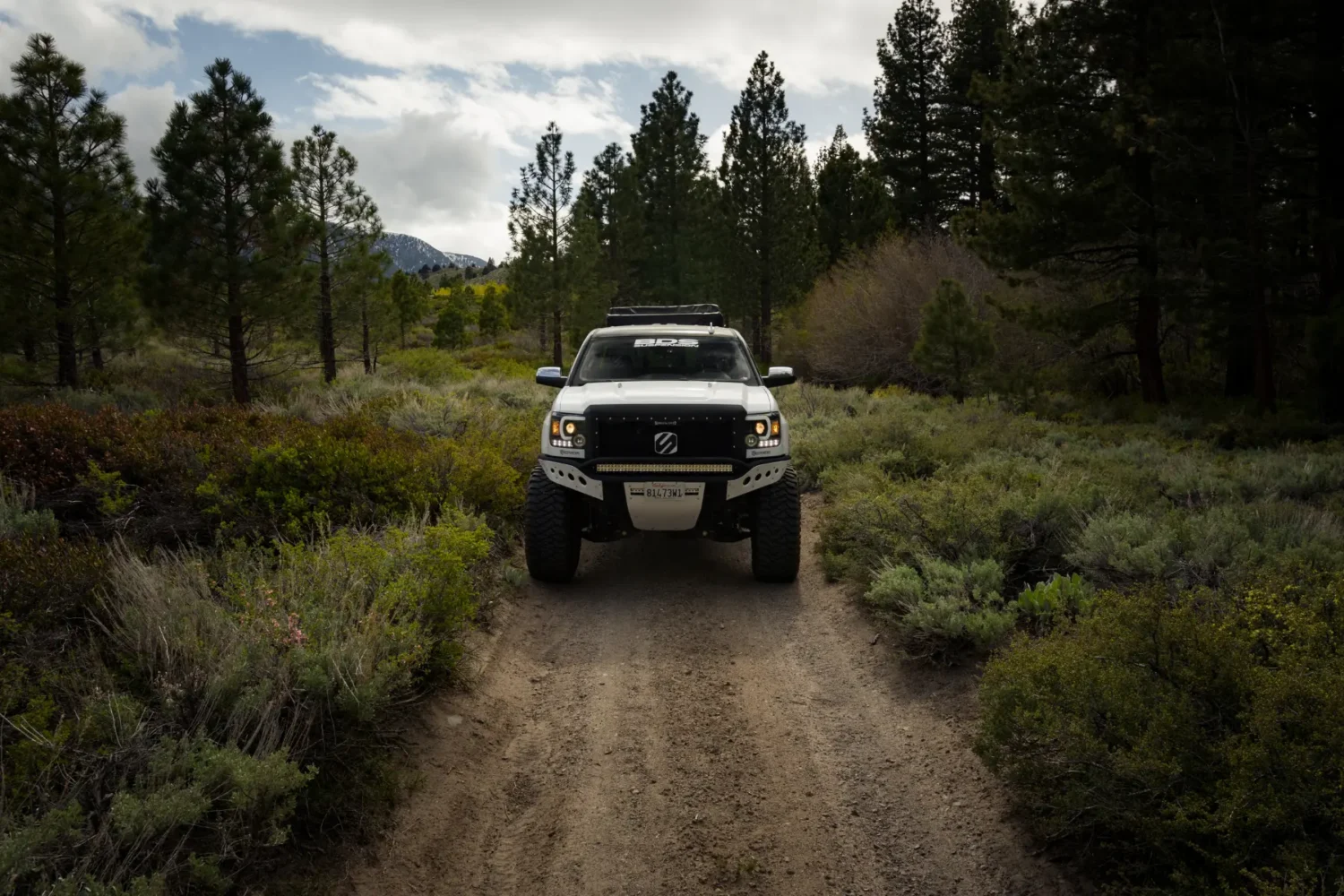
Off-Road Truck Suspension Upgrades for Rugged Terrain
Tackling rocky paths, steep inclines, or uneven trails demands a suspension system that’s built to flex, absorb, and stabilize in unpredictable environments. For serious trail drivers or those who frequently venture off the pavement, stock setups often fall short. Investing in high-performance off-road truck suspension upgrades offers better articulation, shock absorption, and ground clearance. These modifications are built to withstand impact and prevent damage to critical components like the frame, undercarriage, and axles. With increased durability and flexibility, off-road systems allow drivers to navigate rough terrain with greater confidence, stability, and comfort, no matter how extreme the environment gets.
Adjustable Truck Suspensions for Versatility and Control
Some drivers need their suspension to adapt depending on the day’s tasks. Whether towing on the weekend or commuting during the week, flexibility becomes a valuable feature. Systems with adjustable shocks or air suspension give users the ability to fine-tune ride height, stiffness, and overall handling based on current needs. This kind of upgrade brings an added layer of customization, especially for multi-purpose vehicles. With the right setup, you can lower the truck for better fuel efficiency or raise it for off-road clearance.
Full Truck Suspension Lift Kits for Height and Clearance
If your goals include more aggressive styling, larger tires, or better clearance for off-road use, a suspension lift is a practical solution. Raising your vehicle’s height gives it a dominant stance and more space between the undercarriage and the ground. These kits typically involve modifying shocks, springs, and control arms to accommodate the change in geometry. When properly installed, a truck suspension lift kit maintains steering control and handling while offering improved off-road capabilities. It’s important to choose a lift system that fits your truck’s specific frame and driveline configuration to ensure reliable performance and long-term safety.
Comparing Suspension Components and Their Effects
Truck Suspension Spring Upgrades: Coil vs. Leaf Springs
The type of spring your truck uses greatly influences ride comfort and load support. Coil springs are known for delivering a smoother ride with better shock absorption, making them ideal for daily driving and moderate payloads. Leaf springs, by contrast, are more common in trucks built for heavy hauling, as they provide greater load-bearing capacity and durability under stress. Choosing the right truck suspension spring upgrade depends on how the vehicle is used—whether comfort or strength is the priority. Both options offer unique benefits, and upgrading either can help improve control, responsiveness, and overall balance under changing driving conditions.
Choosing the Right Truck Shock Absorbers
Selecting the right type requires you to think about how your truck is used on a daily basis. The wrong shocks can make a truck feel unstable, especially when hauling or off-roading. Below are the core considerations for choosing the best truck shock absorbers for your setup.
- Driving environment plays a major role in determining which shocks are appropriate. Trucks driven mostly on highways or city streets benefit from shocks tuned for comfort and smooth rebound, while vehicles exposed to off-road terrain need shocks designed to absorb harsher impacts and recover quickly after uneven landings.
- Load capacity influences shock absorber performance. Trucks that frequently carry heavy cargo or pull trailers place extra pressure on suspension components. In these situations, you’ll need heavy-duty shocks capable of supporting additional weight without compromising ride stability or over-compressing during sharp turns or sudden stops.
- Shock design matters when it comes to durability and responsiveness. Twin-tube shocks are commonly used for daily driving due to their balanced ride and affordability. Monotube shocks, on the other hand, offer better heat dissipation and faster response, which makes them ideal for performance or off-road applications where conditions are unpredictable.
- Gas-charged options provide additional stability by reducing foaming inside the shock absorber during high-speed or rugged driving. This keeps damping consistent, especially under stress or prolonged use. These shocks tend to last longer and perform better in demanding environments, maintaining their efficiency even after extended usage.
- Compatibility with other suspension parts ensures the entire system functions as a unit. Installing a high-performance shock with weak or aging springs can cause uneven handling or premature wear. It’s essential to consider how the new shocks will integrate with existing components to preserve the overall harmony of your suspension setup.
Choosing the correct shock absorber setup ensures your suspension works efficiently under any conditions. With the right match, your truck becomes safer, smoother, and more responsive, all while protecting other components from stress.
The Role of Dampers and Struts in Ride Quality
While often overlooked, dampers and struts play a central role in how your truck feels on the road. These parts are responsible for controlling motion during acceleration, braking, and cornering. Dampers reduce oscillations and keep the vehicle from bouncing after every bump, while struts integrate with other parts of the suspension to provide structural support. If either component begins to fail, you’ll likely notice increased body movement, reduced control, or uneven tire wear. Upgrading these parts can help significantly improve truck ride quality, especially when combined with properly tuned springs and shocks. Investing in higher-performance dampers and struts can make your truck feel more stable, planted, and predictable, even on unpredictable road surfaces.

Upgrading Bushings, Sway Bars, and Mounts for Better Handling
Small components like bushings, sway bars, and mounts may not seem important at first, but they play a major role in how your truck handles. Worn bushings can cause excessive movement, while upgraded sway bars tighten cornering response and reduce body roll. These components often wear down gradually, making their decline hard to notice until handling becomes sloppy. Installing upgrade components for truck suspension in these areas can enhance precision and stability, resulting in a more confident driving experience whether on the highway or off-road.
Improving Truck Ride Quality Through Suspension Tuning
Softening the Ride with Progressive Springs and Better Shocks
One of the most effective ways to achieve a smoother ride is by fine-tuning the suspension using progressive-rate springs and high-quality shocks. These components are designed to respond differently depending on how much force is applied. Under light loads or on flat roads, the suspension stays soft and comfortable. But when encountering bumps or carrying cargo, it firms up for added control. This dual behavior helps cushion road imperfections without sacrificing support. Choosing the right combination can significantly improve truck ride quality, especially for those who use their truck both recreationally and for work. Upgrading to progressive springs also reduces the harsh jolts commonly felt with stiffer setups, giving the truck a more balanced and forgiving ride profile.
Tuning Damping for Load and Terrain Balance
Damping controls how quickly the suspension recovers after hitting a bump or absorbing weight. By adjusting this feature, drivers can create a ride that’s firm enough for stability but soft enough for comfort. Trucks used in varying conditions—like highways, gravel roads, or construction sites—benefit from damping that’s tailored to those demands. More advanced systems even allow for manual or electronic tuning based on load or terrain. This fine control improves how the vehicle handles changes in momentum or road surface, ultimately enhancing truck suspension performance. Properly adjusted damping ensures consistent traction, reduced sway, and a smoother overall driving experience.
Reducing Vibration and Harshness with Modern Suspension Tech
Today’s trucks benefit from advanced suspension technologies designed to absorb vibrations and isolate the cabin from road imperfections. Innovations like multi-stage shocks, hydraulic bump stops, and enhanced bushing materials help create a more refined driving feel. These technologies reduce driver fatigue, especially on longer trips or during constant city driving. Incorporating newer components allows the suspension to remain flexible without losing strength. Drivers looking to reduce impact without compromising support should explore systems that use updated materials and design. With the right tech in place, a suspension system for trucks can feel noticeably more responsive and controlled.
Matching Suspension Setup to Vehicle Weight Distribution
Every truck has a unique weight balance depending on its configuration, usage, and load habits. Tuning the suspension to match this distribution ensures better handling, even tire wear, and improved control under varying conditions. If the rear tends to carry more weight, that area may need firmer springs or upgraded dampers to stay level and stable. Conversely, if accessories add mass to the front, adjustments must be made there too. Balancing the system helps the truck stay composed during braking, cornering, or hauling. A properly matched setup brings out the full potential of your suspension upgrade by optimizing performance for real-world driving.
Cost, Durability, and Performance Considerations
Budgeting for Your Suspension Upgrade Project
Planning a suspension upgrade begins with understanding what you need and how much you’re willing to spend. Costs can vary widely depending on the complexity of the setup, the quality of parts, and whether you’re installing them yourself or using a shop. Entry-level upgrades may seem appealing, but they might lack the reliability or performance you need long-term. Premium systems, while more expensive upfront, often offer better materials, smoother operation, and reduced maintenance over time. To get the most value from your investment, it’s important to match your goals with realistic expectations for both price and performance. If towing, hauling, or off-roading is part of your routine, you may need to increase your budget accordingly. Planning every detail ahead of time helps you avoid unexpected expenses down the road. Whether your focus is comfort, strength, or style, mapping out your truck suspension upgrade budget ensures you stay within limits while getting exactly what your truck needs.
Evaluating Durability and Maintenance Requirements
The durability of a suspension upgrade plays a major role in how long it performs without issues. Materials like forged steel or corrosion-resistant alloys will typically last longer than cheaper alternatives. It’s also important to understand how much maintenance is required to keep everything working smoothly. Some components need regular lubrication or re-torquing, especially under heavy use. For those who value reliability, evaluating upkeep needs helps narrow down the best truck suspension upgrades and avoid solutions that wear out too quickly or need constant attention to remain functional.
Performance vs. Practicality: What’s Worth the Investment
Balancing ride performance with day-to-day practicality is key when selecting a suspension upgrade. While it might be tempting to go with the highest-performance system, that choice isn’t always suitable for how the truck is actually used. A track-ready or extreme off-road setup may sacrifice comfort or increase wear when used in normal driving conditions. It’s important to consider where and how the truck will operate most often. A setup designed for mixed use offers better results for the average driver. Choosing based on realistic needs ensures you don’t overspend or compromise usability. For those who want more from their vehicle without losing drivability, selecting a well-balanced suspension upgrade for towing or commuting brings the best return on investment.
Choosing Reputable Brands and Quality Components
When upgrading your truck’s suspension, the brand behind each part plays a major role in how well the system performs over time. Choosing wisely can reduce the chances of failure, simplify installation, and extend the life of your suspension system. When investing in upgrade components for truck suspension, brand reputation becomes just as important as the specs.
- Trusted brands are more likely to offer products that meet or exceed OEM standards, ensuring that parts perform as expected even under extreme use.
- Well-engineered components tend to fit better with factory systems, reducing the need for custom adjustments or complicated installation procedures.
- Product warranties from established companies often reflect confidence in their durability, providing coverage if defects or premature wear occur.
- Strong customer support gives you direct access to technical assistance, helping you resolve installation questions or performance concerns quickly and accurately.
- Positive user reviews offer real-world feedback from other truck owners, giving insight into how the parts hold up under daily driving, towing, or off-road use.
Taking the time to research and choose reputable brands helps avoid regrets and unexpected setbacks. In the long run, these choices pay off with better performance, increased safety, and longer-lasting components.

Selecting the ideal suspension setup starts with identifying how you use your truck most often. Whether you spend your days hauling equipment, exploring off-road trails, or commuting across town, your suspension should match your driving style. Customizing your setup allows for better control, smoother rides, and increased safety across various conditions. The more accurately your upgrade aligns with your vehicle’s daily demands, the more noticeable the improvements will be. It’s not about adding the most expensive parts—it’s about choosing what fits your needs best. Taking time to assess your habits helps you avoid overspending or ending up with a system that doesn’t deliver the comfort or strength you were expecting.
Every upgrade should serve a purpose, whether it’s improving performance, enhancing comfort, or preparing your truck for specific tasks. It’s essential to focus on long-term benefits rather than short-term gains. Quality components, reliable brands, and proper installation make a big difference in how your truck performs over time. If you frequently tow heavy trailers, choosing a truck suspension upgrade for towing ensures your vehicle stays level, stable, and safe under load. In the end, smart decisions lead to better driving experiences, lower maintenance costs, and a suspension system that works as hard as your truck does. Upgrading with intention gives your truck the foundation it needs to perform at its best.
